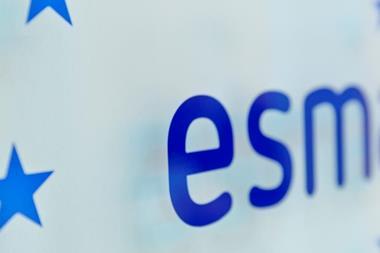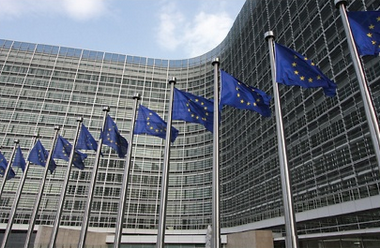Nearly half of funds making green or impact-related claims in their titles will need to change either their names or their investments to stay on the right side of European Union law.
That’s according to research from fintech company Clarity AI, which assessed the impact of guidelines introduced this month by the European Securities and Markets Authority (ESMA).
Under the Cross-Border Distribution of Funds Directive, funds using sustainability or ESG-related words in their names now have to do two main things: invest at least 80% of their assets in a way that demonstrably supports those claims; and apply exclusions based on criteria laid out in the EU’s climate benchmark regulation.
Clarity AI’s head of regulation, Tom Willman, said the latter requirement will trip many funds up.
“ESMA is taking a conservative approach by saying that any term that could reasonably be interpreted by a retail investor to suggest some kind of environmental focus, including ‘ESG’, ‘impact’ and ‘sustainability’, should apply the full restrictions under the Paris Aligned Benchmark (PAB) criteria,” Willman explained.
This means they will not be allowed to invest in companies involved in tobacco, controversial weapons or fossil fuels — there are varying thresholds for exposure to coal, oil, gas, etc.
They must also screen out firms that breach global norms including the OECD Guidelines for Multinational Enterprises on Responsible Business Conduct.
Following a consultation, ESMA conceded that blacklisting fossil fuels would stop some funds targeting companies central to the energy transition, so it tweaked the final rules to enable ‘transition’-labelled funds to use the criteria of the Climate Transition Benchmark (CTB) – a lighter version of the PAB’s screens, without energy exclusions.
CTB exclusions are also required for any fund using a term related to social or governance objectives in its name.
Clarity AI assessed 3,256 funds that currently use words like ‘green’, ‘environmental’, ‘climate’, ‘ESG’, ‘sustainability’ and ‘impact’ in their names, and found that 44% invest in securities that breach the PAB rules on tobacco, weapons and energy.
“That number will almost certainly be even higher when you add in the norms-based exclusions,” noted Willman.
He said that, while ESMA’s new rules will be challenging for asset managers, they are necessary.
“We know how much attention retail investors pay to the name of a fund when they’re choosing where to put their money, so managers should be able to back-up the claims they’re making in those names.”
But, unlike similar fund-naming rules in countries like France and Germany, ESMA’s guidelines don’t just apply to products aimed at retailer investors – they cover every EU-domiciled fund.
“I don’t think the ESMA guidance was quite what they had in mind”
Heike Schmitz, a partner at law firm Herbert Smith Freehills
Heike Schmitz, a partner at law firm Herbert Smith Freehills, said many institutionally-focused funds use acronyms in their names instead of descriptions, because professional investors are less likely to consider the title of a product when making a decision.
For those funds that do use such terms, there is a quick fix, she added.
“You can get out of the ESMA rules very easily by just not using any of the specified words in the fund name. You can still use whatever terminology you want all over your marketing documents.”
She believes that, if this shift does begin to happen, the next big question will be whether ESMA investigates funds with a notable mismatch between their titles and the rest of their public materials, to determine whether they are greenwashing.
“But, technically, it’s okay under these particular rules.”
How ESMA’s rules fit with SFDR
Schmitz described ESMA’s guidelines as “a mini, unofficial fund labelling regime” that could fill in some blanks for European supervisors searching for answers on how to clamp down on greenwashing in the finance sector.
The EU’s flagship Sustainable Finance Disclosures Regulation (SFDR) has so far steered clear of providing definitions or thresholds for sustainable investing, leaving many regulators confused about how they should enforce it.
“The European Commission sees the strategic purpose of SFDR, which is to channel private investment into areas that support Europe’s sustainability goals,” Schmitz explained. “But supervisors don’t look at that overarching objective – they look almost exclusively at how it can be used to tackle greenwashing.”
While regulators want a more prescriptive framework to help them enforce the rules, investors are less united. As IPE recently reported, respondents to the EU’s consultation on how to redesign SFDR were split on the need for a quantitative approach.
“More than 70% said the market needs clearer labels,” noted Schmitz. “But I don’t think the ESMA guidance was quite what they had in mind.”
Clarity AI’s analysis suggested that, regardless of what the Commission does with SFDR in future, many funds will end up being re-categorised under the regulation as a result of ESMA’s guidance.
That’s because it mirrors the framing used in SFDR, requiring funds to invest 80% of their assets in either the sustainability characteristics they promote (equivalent to SFDR’s Article 8 category) or the sustainability objectives they pursue (equivalent to Article 9).
Of the 3,000+ funds that Clarity AI found to have relevant terms in their names, around three quarters were Article 8 funds, and around a fifth were Article 9. But 7% comprised Article 6 funds – those that do not identify as having a sustainable objective or characteristics under the regulation.
“Article 6 funds don’t have to make pre-contractual disclosures the way that Article 8 and 9 do,” explained Willman. “But ESMA’s guidelines essentially require a fund to demonstrate that it aligns with either Article 8 and 9 principles.”
This means an Article 6 fund that isn’t making disclosures under SFDR won’t be able to provide ESMA with the information it needs to assess compliance with the new guidelines.
“So the implicit suggestion within the rule is that those funds will either have to stop using these words in their names, or upgrade themselves to Article 8 or 9 under SFDR so they can demonstrate compliance,” Willman said.
ESMA’s guidelines will take effect in August. Existing funds will have six months to align, and those created after August must comply immediately.
Looking for IPE’s latest magazine? Read the digital edition here






































No comments yet